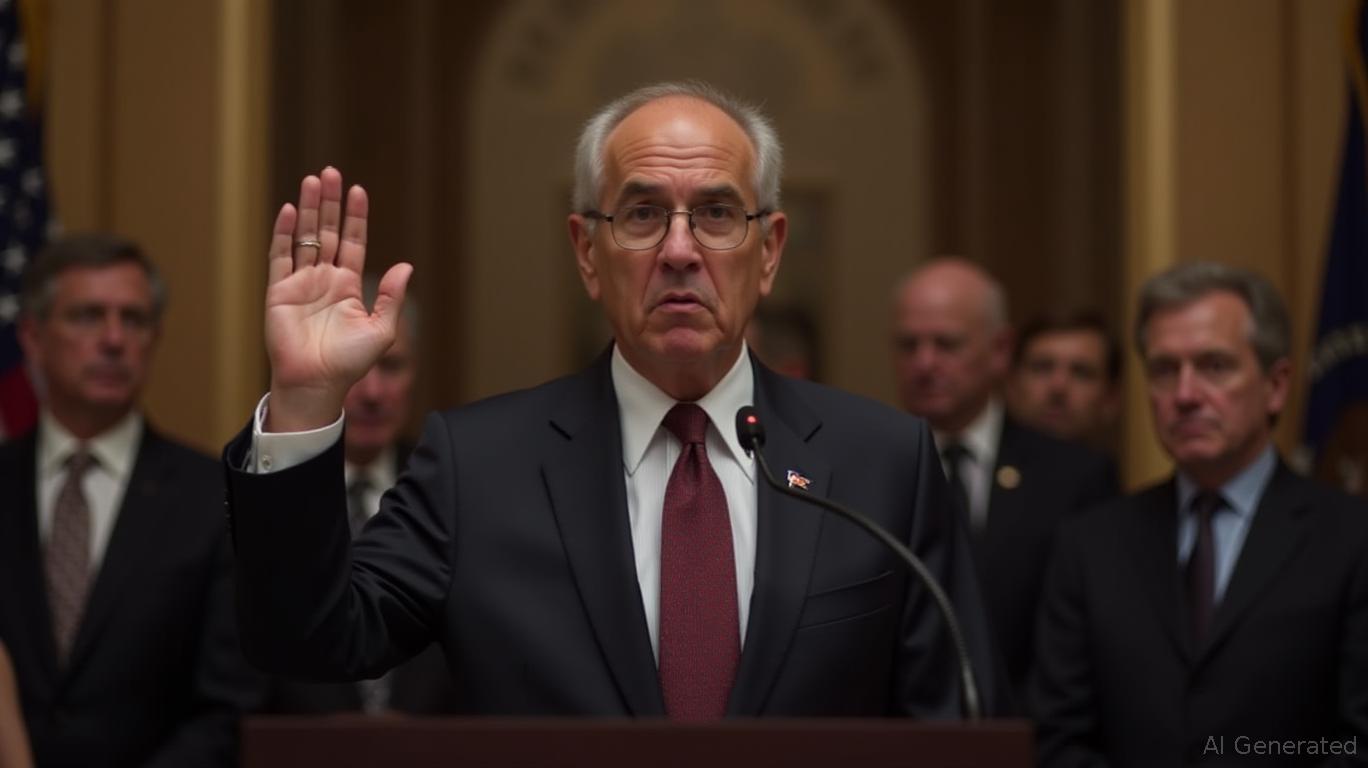US Regulators Intensify Focus on Financial Crime: Implications for Banks and Investors
Wednesday, Nov 13, 2024 6:20 pm ET
US regulators have issued a stark warning to bankers, signaling an intensified focus on financial crime. This heightened scrutiny, driven by evolving threats and geopolitical tensions, has significant implications for financial institutions and investors alike. In this article, we delve into the key aspects of this regulatory shift, its potential impact on compliance costs, and the strategic responses institutions may need to adopt.
The US Department of the Treasury's 2024 National Risk Assessments (Treasury, 2024) highlights the growing concerns around money laundering, terrorist financing, and proliferation financing. Regulators are increasingly focusing on areas such as virtual asset regulation, sanctions compliance, and the misuse of legal entities. This intensification is a response to the evolving tactics of illicit actors and the need to protect the financial system from abuse.
Geopolitical tensions, such as Russia's war in Ukraine and Hamas' attacks in Israel, have further shaped the illicit finance risk environment. As a result, regulators are prioritizing areas like sanctions and price cap compliance, including virtual currency mining and dark net markets. This increased focus on financial crime is driven by the need to prevent illicit actors from exploiting financial systems to support their activities.
For financial institutions, the intensification of regulatory scrutiny may lead to higher compliance costs. Institutions will need to enhance their risk management and compliance programs, potentially leading to investments in technology, personnel, and training. Moreover, institutions may need to re-evaluate their operational strategies, potentially leading to changes in business models, risk appetites, and customer segments.
To navigate this challenging landscape, financial institutions must adopt strategic responses. This may involve enhancing fraud models, operations, and investigation processes, as well as strengthening insider corruption controls. Institutions should also prioritize robust cybersecurity risk management, given the growing threat of cybercrime. Additionally, institutions may need to expand their focus to include areas like beneficial ownership information reporting and analysis.
Institutions should also consider the potential implications for their investors. The increased focus on financial crime may lead to higher compliance costs, which could impact profitability and shareholder returns. However, institutions that effectively manage these risks and adapt their strategies may be better positioned to weather the regulatory storm and maintain investor confidence.
In conclusion, the intensified focus on financial crime by US regulators presents both challenges and opportunities for financial institutions. While the increased scrutiny may lead to higher compliance costs, institutions that adopt strategic responses and effectively manage these risks may be better positioned to protect their investors and maintain their competitive edge. As the regulatory landscape continues to evolve, institutions must remain vigilant and adaptable to ensure their long-term success.
Word count: 598
The US Department of the Treasury's 2024 National Risk Assessments (Treasury, 2024) highlights the growing concerns around money laundering, terrorist financing, and proliferation financing. Regulators are increasingly focusing on areas such as virtual asset regulation, sanctions compliance, and the misuse of legal entities. This intensification is a response to the evolving tactics of illicit actors and the need to protect the financial system from abuse.
Geopolitical tensions, such as Russia's war in Ukraine and Hamas' attacks in Israel, have further shaped the illicit finance risk environment. As a result, regulators are prioritizing areas like sanctions and price cap compliance, including virtual currency mining and dark net markets. This increased focus on financial crime is driven by the need to prevent illicit actors from exploiting financial systems to support their activities.
For financial institutions, the intensification of regulatory scrutiny may lead to higher compliance costs. Institutions will need to enhance their risk management and compliance programs, potentially leading to investments in technology, personnel, and training. Moreover, institutions may need to re-evaluate their operational strategies, potentially leading to changes in business models, risk appetites, and customer segments.
FISI Net Income YoY, Net Income
To navigate this challenging landscape, financial institutions must adopt strategic responses. This may involve enhancing fraud models, operations, and investigation processes, as well as strengthening insider corruption controls. Institutions should also prioritize robust cybersecurity risk management, given the growing threat of cybercrime. Additionally, institutions may need to expand their focus to include areas like beneficial ownership information reporting and analysis.
Institutions should also consider the potential implications for their investors. The increased focus on financial crime may lead to higher compliance costs, which could impact profitability and shareholder returns. However, institutions that effectively manage these risks and adapt their strategies may be better positioned to weather the regulatory storm and maintain investor confidence.
In conclusion, the intensified focus on financial crime by US regulators presents both challenges and opportunities for financial institutions. While the increased scrutiny may lead to higher compliance costs, institutions that adopt strategic responses and effectively manage these risks may be better positioned to protect their investors and maintain their competitive edge. As the regulatory landscape continues to evolve, institutions must remain vigilant and adaptable to ensure their long-term success.
Word count: 598


_442a2dcc1749832873286.jpeg)
_e68fac6d1749831664430.jpeg)






Ever since I found this platform on Facebook that is been managed by Mrs KARLA ELLISON, it’s been very helpful in knowing how to be a better steward of crypto. This was a great trader that help a lot of people, in trading analysis.
Since Donald J Trump has approved crypto sales for investment, I've finally a lot of profits in my investment. Bitcoin now is $93 heading to $100k
By the help of Mrs KARLA ELLISON. I've gotten my withdrawal successfully